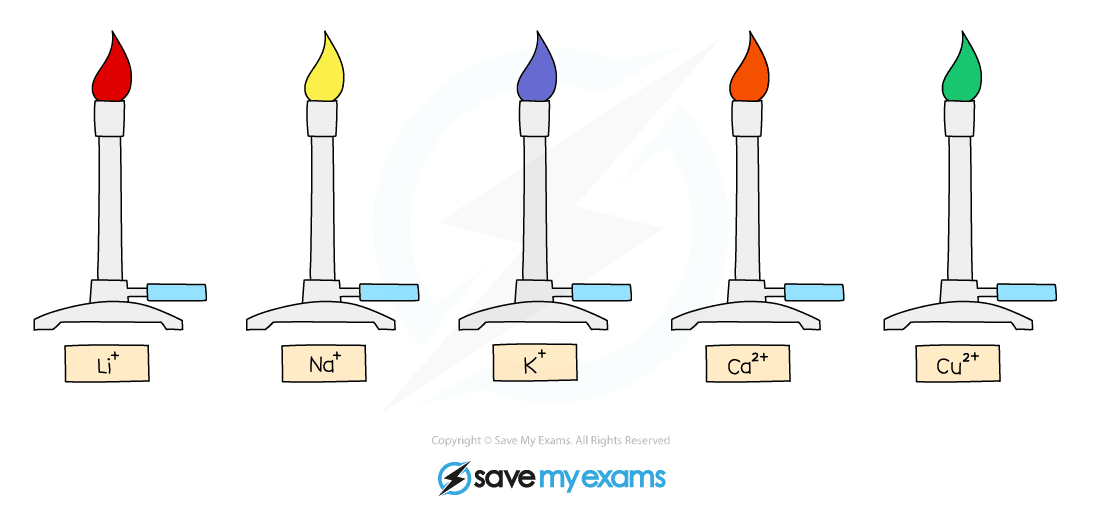Identification of Cations
- Metal cations in aqueous solution can be identified by the colour of the precipitate they form on addition of sodium hydroxide and ammonia
- If only a small amount of NaOH is used then normally the metal hydroxide precipitates
- In excess NaOH some of the precipitates may dissolve
- A few drops of NaOH is added at first and any colour changes or precipitates formed are noted
- Then the NaOH is added in excess and the reaction is observed again
- The steps are repeated for the test using ammonia solution
Analysing results
- The table below contains the results for each of the cations included in the syllabus
- If a precipitate is formed from either NaOH or aqueous ammonia then the hydroxide is insoluble in water
- Zinc for example reacts as such:
ZnCl2(aq) + 2NaOH(aq) →Zn(OH)2 + 2NaCl (aq)
- Ca2+ ions can be distinguished from Zn2+ and Al3+ as calcium hydroxide precipitate does not dissolve in excess NaOH but both zinc hydroxide and aluminium hydroxide do
- Zn2+ ions can be distinguished from Al3+ ions as ZnOH dissolves in excess aqueous ammonia but Al(OH)3 does not
- Most transition metals produce hydroxides with distinctive colours
Tests for cations
- The flame test is used to identify the metal cations by the colour of the flame they produce
- A small sample of the compound is placed on an unreactive metal wire such as nichrome or platinum
- The colour of the flame is observed and used to identify the metal
The colours formed in the flame test for metal ions
Results
Exam Tip
The ammonia or sodium hydroxide solution must be added very slowly. If it is added too quickly and the precipitate is soluble in excess, then you run the risk of missing the formation of the initial precipitate, which dissolves as quickly as it forms if excess solution is added.
Be sure to distinguish between the term “colourless” and “clear”. A solution that loses its colour has become colourless. A clear solution is one that you can see through such as water. Solutions can be clear and have colour eg. dilute copper sulphate.
Identification of Anions
Exam Tip
When it comes to qualitative inorganic analysis, always remember that there will be a test for the metal cation part of the molecule and another test for the anion part.
Identification of Gases
- Several tests for anions and cations produce gases which then need to be tested
- The table below indicates the tests for the gases included in the syllabus
Exam Tip
It is easy to confuse the tests for hydrogen and oxygen. Try to remember that a ligHted splint has a H for Hydrogen, while a glOwing splint has an O for Oxygen.






